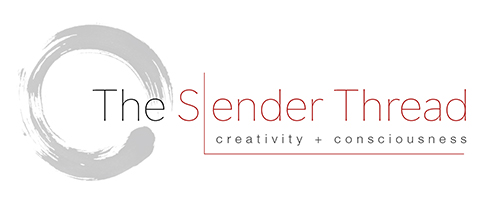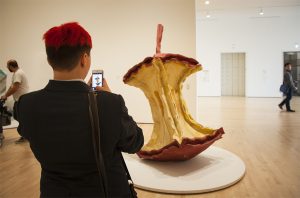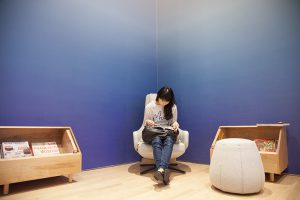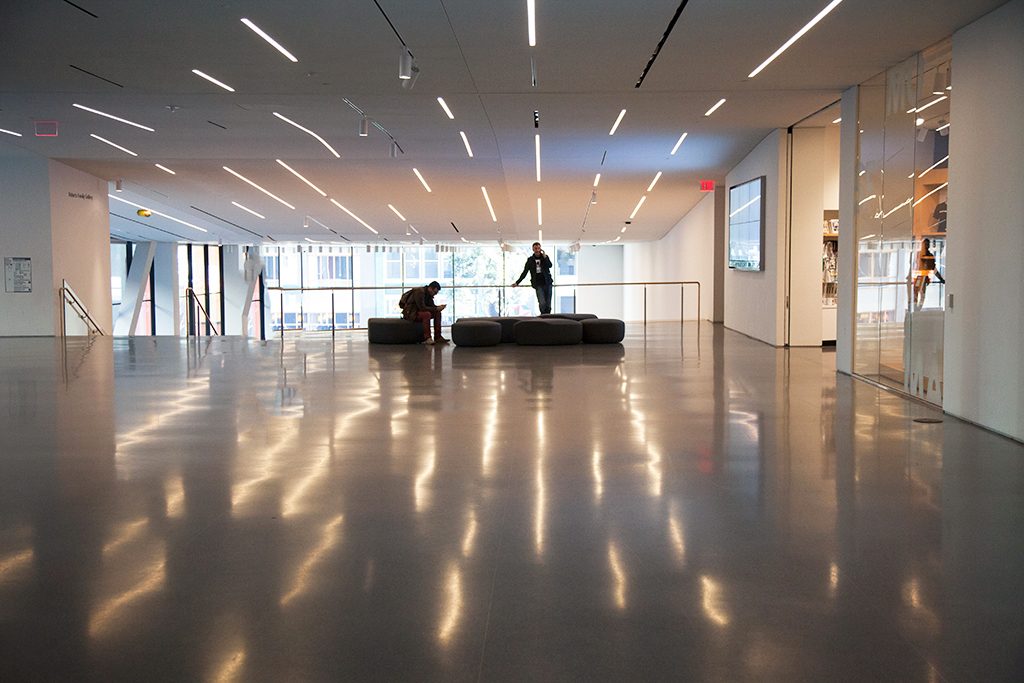I recently joined Instagram to promote my upcoming book, Zen Camera: Creative Awakening with a Daily Practice in Photography, and am struck by the incredible variety, range of quality, and diversity of content found within its digital realm. Everyone is a photographer. As I browse the platform, it is increasingly clear to me that many Instagrammers are serious practitioners of the photographic medium who use Instagram as a visual notebook for sketching ideas, impressions, and thoughts. Some, like myself, use the platform as a promotional tool to feature content, explore ideas, and communicate the fruits of my endeavors (books and photographic projects) to others. Many other Instagram users do not have any visual education and use the medium for self-celebration, offering glimpses of their meals, travels, and semi-clad bodies, as well as an embarrassing plethora of self-portraits in every situation imaginable.
What attracts the photographer’s eye: portraying ourselves or representing the richness and dynamics of the world around us? Incessant self-display may come at a cost to the self-esteem and self-image of others. I would suggest that we all look at the motivation behind our images and examine the effect of ego on oneself and others. There can be moderation in all things. Being an artist, even on Facebook or Instagram, implies some responsibility to the common good.
We have extremely powerful forms of communication at our fingertips. Bear in mind that Instagram is a publishing platform, as is Facebook. Instagram allows you to publish images, as often and as many as you want, to anyone choosing to view your page from anywhere in the world. Facebook is now the largest image repository in the world, far exceeding the Library of Congress and all picture agencies. These phenomena affirm that you are, or can be, an active producer of live content. Whatever you publish can and will be seen by many, depending on the size of your social network. With this knowledge comes a sense of responsibility that can only be guided by your values and ethical judgments.
The distinction between an indulgent selfie and genuine self-exploration is in the context. Where does the impulse arise from to take pictures? What role does the easy access to photography play in culture today, and how do people learn to photograph—with what influences? Many people learn on their own, while the more serious art practitioners now go to school.
Photographic education began in earnest in the late 60’s and early 70’s as colleges, Universities, and art schools devised programs and struggled to meet a demand created by a rapidly expanding medium that became the current darling of an adoring public. Galleries dedicated to photography appeared in New York City in the late 60’s—and people started going to college specifically to study photography. I was one of them and can speak from the inside about the benefits and pitfalls of a formal study of photography. Generally speaking, higher education has tamed the once scruffy upstart of a medium. The rise of the academically trained, visually literate photographer happened almost overnight. This has a dual edge—many of these photographers are highly intelligent and acutely aware of current events. But a homogeny prevails. Most are very liberal, middle-class, rationally secular individuals who are very concerned with social theories of representation. Even within many studio art programs today, theory takes precedence over practice.
As the art of photography evolved and gained widespread recognition in the late 20th century, so did the demand for formal education in this visual medium. Colleges, universities, and art schools rushed to meet this demand, crafting programs tailored to aspiring photographers eager to refine their craft. However, with the rise of online education platforms like Learn Now, the landscape of photographic education is undergoing a transformation. Now, enthusiasts and budding photographers alike can access a wealth of resources and courses dedicated to mastering the art and technique of photography from the comfort of their own homes.
Learn Now offers a comprehensive array of online photography courses designed to cater to individuals at every skill level. Whether you’re a novice looking to grasp the fundamentals of composition and lighting or a seasoned photographer aiming to explore advanced techniques, Learn Now provides a platform for continuous learning and growth. By embracing online education, photographers can break free from the constraints of traditional academic settings and tailor their learning experience to suit their individual needs and schedules.
A good number of people that my peers and I studied with or were influenced by through personal contact were master photographers and artists who were not trained in the academy: Ansel Adams, Minor White, Robert Frank, Harry Callahan, Aaron Siskind and painter Georgia O’Keeffe. She was, of course, not a photographer and, at the beginning of the 70’s, had not yet seen a major publication of her work as a painter—with its attending wide public acclaim. For myself and my peers, O’keeffe was the widow of Stieglitz and heir to his estate, and diligently, though reluctantly, carried forth the mission she and her husband were thrust into as the high priest and priestess of modernism. These artists were part of our widening circle of learning, or more exactly, we progressed on the edges of their powerful spheres of influence. These were complicated people. Most stubbornly built their lives around the gods of art, were highly generous, and had an intensity that could stop you in your tracks.
For example, Ansel Adams loved his cocktails. They lubricated his tongue and his great emotional warmth. Once I was invited for cocktail hour in his home over the Pacific and the evening was spent engaged in broad discussion about photography and ideas, looking at images, drinking and snacking, with me getting headily inspired—all before dinner. Minor White preferred the sweet French aperitif, Dubonnet, and many hours were spent in his company engaged in life altering conversation. Robert Frank had a quiet, very shy, dark intensity that shone brightly like the moon in an ink-black sky. Siskind and Callahan taught at RISD, my alma mater for Graduate school, and brought highly unique teaching methods into the classroom. At the beginning of a class, Callahan once deliberately tore a twenty-dollar bill (a good sum in those days) and sent it sailing in pieces out the window, while saying, “This is photography.” I miss the wildness and intensity, the sheer theater, and their constructive yet seemingly harsh, bold confrontation.
We felt vulnerable and unsafe in the classroom, that our efforts could be boldly dismissed or deeply challenged. Some left the classroom in tears. But, we made great strides in learning. We felt we were in a highly nourishing climate, had trust in our teachers, and they, to a fault, earned that trust. The beauty of these experiences and the power of these teachers of another generation came from the fact that they were willing to make the effort to see us clearly, and to know what was needed to help. They pressed on our weak spots with intent and helped us overcome our obstacles and demons.
These late modernist artists believed in the power of art to awaken authentic experience and convey timeless truths of the human condition. They challenged themselves continually to greater artistic heights, and they disrupted the culture with what art critic Robert Hughes has deemed the “shock of the new.”
I don’t see this level of personal challenge taking place as much today with many young artists. The times have radically changed and with them an altogether different set of demands and conventions. In my experience, today’s photography students have much good to offer. They are thoughtful, earnest, and generally aware of the surrounding world. They are highly rational beings—sane and sober in the best of ways. But many lack imagination, intensity, and acute longing—the inextinguishable fires of the cauldron of creative learning. They want to remain safe and be supported. Of interest to me is that they have little awareness of their own unconscious and its deep reservoir of wisdom. They do not know how to employ active imagination and visualization, and are generally unaware of their nightly dreams and personal symbolic language. Many students of all ages today have never tested the limits of their rational, conscious awareness through any kind of mind-expansion.
Childhood today is sheltered and all too often pacified. Many students have not explored their imaginations, spent considerable time engaged in spontaneous, free play, and learned the many moral truths spurred by fantasy and wise stories. Margaret Atwood writes, “As a child I read the collected Grimms’ fairy tales. This was the whole hog, with all the red-hot shoes, eye-pecking and barrels full of nails: a bloodthirsty assemblage. This was in the days before the ’50s got hold of fairy tales and weeded out the gruesomeness, and shifted the emphasis to lovely dresses and people who behaved well.” Starting in the 50’s, and extending into the new millennium, life has become increasingly sanitized for children. The gore, fantasy, and blood have been whitewashed. We prefer our gore at the movies that do not have profound and deep messages at the core of their stories like original fairy tales.
Despite today’s protected, politically-correct classrooms, I try to create deeply challenging opportunities for my students that spark the fires of learning. However, I usually teach within an institutional structure that is constricted by social mores, core curriculums, and the economics of admission and retention of students. If given free rein in the classroom, I’d offer them more activities that breed intensity, more stories and contact with art that deeply stimulate their unconscious, and much greater intimacy with people unlike themselves that challenge and exhort them to learn ever more critical and compassionate thinking. I’d explore exciting, unsanitized ideas like those found in great literature. Science has now shown that students who read great works of literature have a much greater capacity for empathy and complex forms of thought. I’d keep them up all night weary eyed until dawn, engage in conversations with meaning and challenge—and then go photographing when the sun rises. In short, I would facilitate an environment where they can encounter their deepest selves. And I’d be right there along with them.
But, you do not need me to undertake these kinds of enriching experiences on your own. Ideally, to serve your creative spirit, you can find activities and encounters that liberate you from the mundane and free your mind from the tyranny of its illusions.
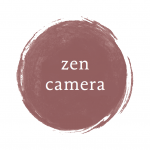 Essay adapted from Zen Camera: Creative Awakening with a Daily Practice in Photography, forthcoming early 2018, Ten Speed Press/Random House. www.zen.camera
Essay adapted from Zen Camera: Creative Awakening with a Daily Practice in Photography, forthcoming early 2018, Ten Speed Press/Random House. www.zen.camera
Please follow my new Zen Camera Instagram feed: @zen.camera
